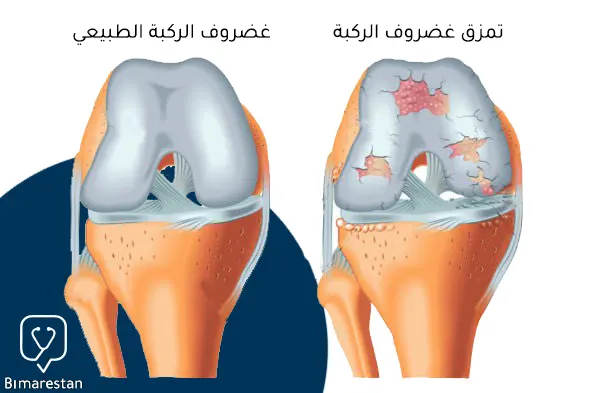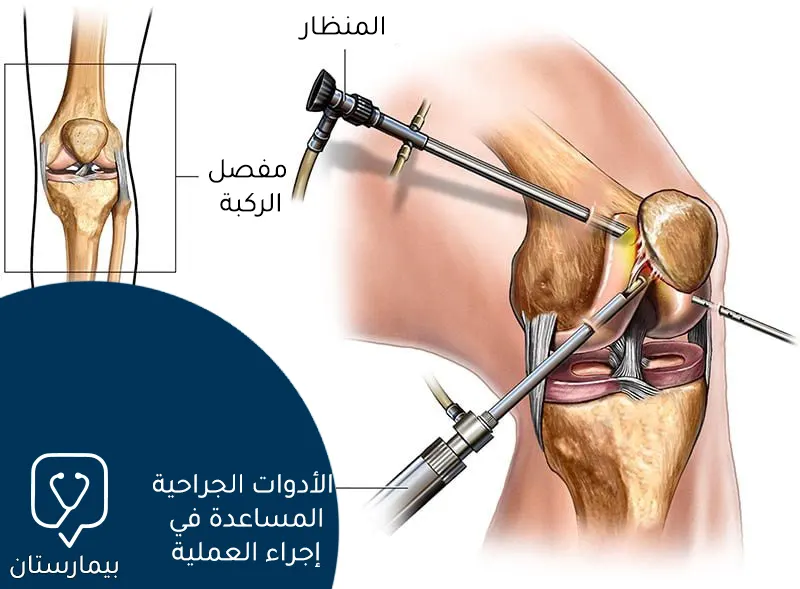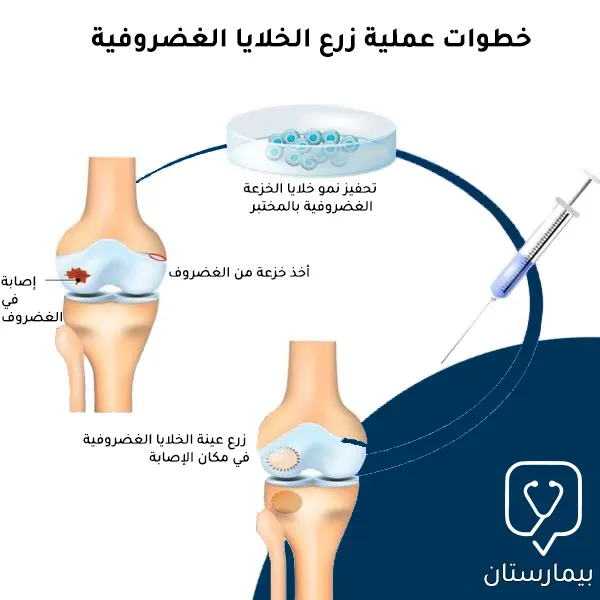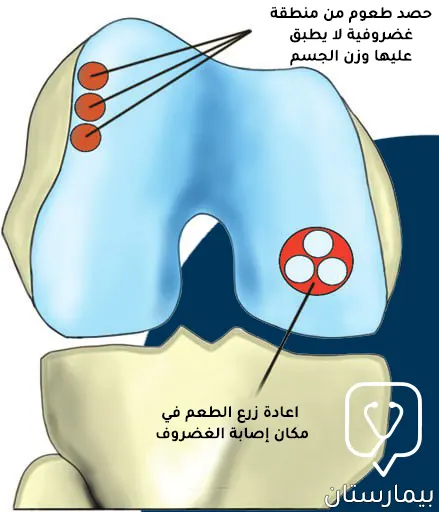تجرى عملية غضروف الركبة Knee cartilage surgery عندما يتعرض الغضروف الهلالي لتضرر أو تمزق شديد وتصبح العلاجات المحافظة غير فعالة في تخفيف أعراض الإصابة.
تهدف جراحة إصلاح قطع غضروف الركبة لتمكين المريض الذي يعاني من آلام شديدة وصعوبة الحركة من التخلص من هذه الأعراض دون الحاجة لعملية استبدال مفصل الركبة بشكل كامل بحيث يمكن إجراء هذه العملية باستخدام تقنيات عدة من أبرزها منظار الركبة والذي يتميز بكونه طفيف التوغل قليل الخطورة.
تمكنت تركيا من توفير أحدث الطرق والتقنيات اللازمة لإجراء عملية غضروف الركبة بالمنظار والتي تتميز بسهولة إجرائها وسرعة التعافي بعدها، كما أن تكلفة عملية الغضروف المفصلي للركبة في تركيا أقل بكثير من الدول الأخرى على الرغم من كفائتها العالية، تابع معنا لتتعرف على كل ما تريده عن عملية غضروف الركبة.
لمحة عن عملية غضروف الركبة
تحوي ركبة الإنسان قطعتين من غضاريف هلالية على شكل حرف C، تقوم الغضاريف الهلالية بوظيفة تسهيل حركة المفصل حيث تعمل كوسادة مزلقة للحركة بين عظام الساق والفخذ إضافةً لامتصاص الصدمات وحماية المفصل من التعرض للإصابات.
يتعرض غضروف الركبة لخطر حدوث تمزق أو قطع في حالة الإصابات المؤثرة على مستوى الغضروف، وأكثر ما تشاهد إصابة الغضروف الهلالي عند الرياضيين وخاصة لاعبي كرة القدم والسلة لكونهم أكثر عرضة للإصابات من غيرهم، إلا أن بعض الأمراض قد تسبب ضعف وتآكل في الغضروف مما يجعله معرض للتمزق والقطع بِشكل أكبر.
يوجد العديد من الوسائل الغير جراحية المستخدمة في سياق علاج تمزق غضروف الركبة الخفيف أو متوسط الشدة كممارسة التمارين والعلاج الفيزيائي مع استخدام الأدوية المضادة للالتهاب وتطبيق الثلج على الركبه، إلا أن هذه العلاجات قد تكون غير فعالة في حالة القطع الشديد في الغضروف وهنا قد تظهر الحاجة لإجراء عملية غضروف الركبة لإصلاح الاصابة الغضروفية وتخفيف الألم مع تحسين مجال الحركة.
قد يلجأ الجراح لتقنية حديثة في إجراء هذا النوع من العمليات تعرف بعملية تنظير الركبة والتي تتميز بقدرتها على تشخيص مشاكل واضطرابات الغضروف الهلالي في مراحلها المبكرة وتحديد وجود تلف أو تآكل طفيف بالغضروف من خلال الحصول على رؤية واضحة لمفصل الركبة ومكوناته.

متى تجرى عملية غضروف الركبة؟
عادةً ما يلجأ الطبيب الجراح لعملية غضروف الركبة عندما تصبح إصابة الغضروف شديدة مؤثرة على حياة المصاب مع فشل وسائل المعالجة الأقل توغلاً في تحسين وتخفيف الأعراض، فمن الحالات التي تضر بالغضاريف وتجعلهم أكثر عُرضة للإصابة والقطع هو مرض التهاب المفاصل التنكسي (الفصال العظمي) الذي غالبًا ما يصيب الكبار في العمر.
ولا شك بأن السبب الأشيع لإصابة الغضروف الهلالي هو إصابات الرياضيين الناتجة عن تغيير مفاجئ باتجاه الحركة أو رفع الأوزان الثقيلة وغيرها من النشاطات الرياضية الأخرى التي تضع حمل شديد على الغضروف.
أنواع عملية غضروف الركبة وكيفية إجرائها في تركيا
تتوفر طرق عديدة يتم من خلالها إجراء جراحة اصلاح قطع الغضروف الهلالي، تعتمد اختيار الطريقة المناسبة على عدة عوامل منها درجة تمزق غضروف الركبة وحجمه بالإضافة إلى الحالة الصحية العامة للمصاب.
فقد تتم الجراحة باستخدام واحدة من هذه التقنيات:
عملية غضروف الركبة بالمنظار
يعد المنظار من أفضل التقنيات الجراحية المستخدمة في معظم عمليات الركبة وذلك لكونه أقل توغلاً وخطورة من الجراحة التقليدية المفتوحة بالإضافة إلى أنه لا يحتاج إلى شق جراحي كبير وفترة الشفاء بعده قصيرة إذ يتمكن الشخص عادةً من مغادرة المستشفى في اليوم ذاته بعد العملية.
أثناء تنظير المفصل يقوم الجراح بعمل شقوق جراحية صغيرة يتم من خلالها إدخال كاميرا تتيح للجراح إمكانية الرؤية الواضحة للمفصل وتشخيص أمراضه، كما يستخدم التنظير لعلاج وإجراء عمليات مختلفة في الركبة عبر الاستعانة بأدوات جراحية يتم إدخالها بواسطة الشقوق التي تم عملها مسبقاً، اقرأ أكثر عن عملية منظار الركبة.
التكنيك الجراحي لعملية غضروف الركبة بالمنظار يختلف بحسب شدة التمزق في الغضروف، فمن أهم الوسائل المتبعة في جراحة منظار غضروف الركبة ما يلي:
عملية غضروف الركبة عبر إزالة جزء من الغضروف
قد يكتفي الجراح في الحالات الخفيفة من تمزق الغضروف بإجراء استئصال وتنضير للأجزاء المتمزقة من غضروف مفصل الركبة والإبقاء على أجزاء الغضروف الأخرى السليمة، تتميز هذه الطريقة بنتائجها الفعالة في تخفيف أعراض تمزق الغضروف الهلالي والسماح للمريض بعد فترة زمنية بالعودة لنشاطاته اليومية الاعتيادية ولكن يقتصر دور عملية التنضير على تخفيف الأعراض فقط ولا تقوم بمعالجة المشكلة الرئيسية فغالباً ما تشارك مع وسيلة أُخرى في العلاج.

عملية غضروف الركبة عبر عمل ثقوب دقيقة بالغضروف
إن السبب الأساسي الذي يعيق شفاء الغضروف المتمزق والتئامه هو عدم احتواء النسيج الغضروفي على أوعية دموية تتيح إمكانية تدفق الدم والبروتينات اللازمة لشفاء والتئام أذية الغضروف الشديدة من تلقاء نفسها.
من الممكن عبر القيام بعملية جراحية زيادة تدفق الدم للغضروف، حيث ينطوي هذا الإجراء على عمل ثقوب دقيقة في العظام المحيطة بالغضاريف للسماح بمكونات نخاع العظم من الوصول إلى سطح الغضروف مما يسرع من شفاء وتشكل جزء غضروفي جديد يعوض الجزء المتأذي ويقوم بوظيفته.
يجب على المرضى الالتزام بإجراءات التعافي المحددة من قبل الأخصائي بشكل صارم بعد جراحة غضروف الركبة بالكسور الدقيقة كاستخدام العكازات وتجنب النشاط الذي يضع حمل على الركبة وغيرها من الأمور الأُخرى.
عملية إصلاح غضروف الركبة عبر زرع خلايا غضروفية
يُنصح بهذا الإجراء عند صغيري العمر والأشخاص ذوي الفعالية الحركية كالرياضيين الذين تعرضوا لتمزق غضروفي بحجم أقل من 2 سم، تهدف هذه العملية لمنع تطور تنكس الغضروف مع تحفيز نمو سطح غضروفي جديد مكان السطح المتضرر وقد تفيد في تجنب أو تأخير الحاجة لجراحة استبدال مفصل الركبة الكامل بمفصل صناعي.
تنطوي هذه الجراحة على مرحلتين، يقوم جراح المفاصل في المرحلة الأولى باستئصال خزعة من غضروف الركبة المصاب عبر منظار الركبة، ومن ثم ترسل هذه الخزعة إلى المختبر ليتم هنالك تحفيز نمو ملايين من الخلايا الغضروفية وبعدها تعاد العينة للجراح لاستخدامها في المرحلة التالية.
في المرحلة الثانية يتم عمل شق جراحي في جراحة مفتوحة حتى تزرع العينة السابقة في منطقة اصابة الغضروف، تنضج خلايا الزرعة وتنمو مع مرور الوقت ليتشكل نسيج جديد يملأ مكان النسيج المتمزق والمصاب، قد تصل الفترة الزمنية لسنة ونصف حتى يكتمل النمو الغضروفي في منطقة الزرع.

جراحة غضروف الركبة عبر زرع طعوم ذاتية
يتم إجراء عملية زرع الطعوم الذاتية في التمزقات الصغيرة للغضروف الهلالي وتتم عن طريق سحب واستئصال جزء غضروفي سليم من ركبة الشخص نفسه بحيث يكون هذا الطعم غير متحمل لوزن الجسم أثناء المشي والحركة ليتم فيما بعد إعادة زرع العينة المأخوذة في منطقة تمزق الغضروف.

عملية الغضروف الهلالي بزرع طعم من شخص متبرع
هذا الإجراء أقل شيوعاً من العمليات السابقة ويستخدم في الإصابات الشديدة جدا لغضروف الركبة، تنطوي فكرة العملية على الحصول على سدادة غضروفية من جثة شخص متوفي وزرعها في مكان تمزق الغضروف الهلالي.
عملية غضروف الركبة بالجراحة المفتوحة
أصبحت عملية الغضروف المفصلي للركبة بالجراحة المفتوحة أقل شيوعاً مما كانت عليه مسبقاً ويعزى سبب ذلك إلى ظهور تقنيات أكثر حداثة وأقل خطراً وتوغلاً من عملية الغضروف التقليدية كاستعمال منظار الركبة المتطور.
يُحتفظ بهذه الجراحة لحالات الإصابات المعقدة التي تختلط مع أذيات عديدة في المفصل والتي يصعب إصلاحها دون عمل شقوق جراحية واسعة أو في العمليات التي تتطلب زرع طعوم وغيرها من الإجراءات التي تحتاج عملية مفتوحة.
نصائح بعد عملية الغضروف الهلالي
يجدر على كل مريض خضع لهذه الجراحة اتباع تعليمات وإرشادات طبيبه بحذافيرها فالفترة التالية للعملية هي فترة حساسة وقد تمضي بسرعة ويتمكن المريض من العودة لنشاطاته الروتينية وقد تطول أكثر معيقةً المريض من ممارسة حياته بصورة طبيعية.
لا نستطيع تحديد مدة شفاء ثابتة لجميع المرضى وذلك لأن ظروف عملية كل شخص تختلف عن ظروف الشخص الآخر بسبب عوامل كثيرة من أهمها درجة تمزق غضروف الركبة التي استدعت القيام بالعملية، ولكن عادة ما تتراوح المدة التي يحتاجها الشخص حتى يتعافى بشكل تام من العملية ويعود لممارسة كافة نشاطاته السابقة من 3 إلى 6 شهور وسطياً.
سنذكر بعض النصائح التي تفيد في تسريع وتسهيل مرحلة التعافي ومنها:
العلاج الطبيعي بعد عملية الغضروف الهلالي
إن للعلاج الفيزيائي أهمية كبيرة لكونه يسهل تعافي الغضروف وشفائه لكي يستطيع الشخص العودة بسرعة لممارسة نشاطاته اليومية كالمشي وصعود الدرج والأعمال المنزلية كما تحافظ التمارين على قوة ومرونة عضلات الركبة لمنع الضمور العضلي بالإضافة لمنع تشكل الجلطات الدموية نتيجة الركودة التي قد يسببها الاضجاع المستمر لفترة طويلة في السرير بعد جراحة تمزق غضروف الركبة.
سيقوم خبير العلاج الطبيعي بتعليمك مجموعة تمارين مصممة لتحسين واستعادة مجال الحركة الطبيعي لديك مع تخفيف الألم الذي قد تشعر به بعد العملية إضافةً لتحسين تدفق الدم إلى ركبتك وسيمنعك أيضاً من بعض النشاطات التي من شأنها أن تضر وتؤخر شفاء وتعافي غضروف الركبة الهلالي لديك كالجلوس بوضعية القرفصاء (السكوات) أو القفز وغيرها من الوضعيات الأخرى.
نسبة نجاح عملية غضروف الركبة
تترافق جراحة الغضروف الهلالي مع نتائج مرضية في أغلب الحالات وخاصة عندما تُجرى بأحدث الطرق تحت إشراف طبيب ذو خبرة معتبرة فقد أشارت الإحصائيات لنسبة نجاح تتراوح من 70 إلى 90% وأضافت الدراسة بأن 15% من الأشخاص الذين خضعوا لجراحة زرع خلايا غضروفية عانوا من فرط نمو بالخلايا الغضروفية مما أدى لألم في الركبة وشعور بعدم الارتياح عندهم.
هذه النسب تختلف باختلاف بعض العوامل مثل عمر الشخص وحالته الصحية قبل خضوعه للجراحة والطريقة التي أجريت العملية من خلالها فاستخدام منظار الركبة يحمل نسب أعلى للنجاح مع احتمال مضاعفات أقل ولا ننسى الدور المهم لخبرة الجراح والتي تلعب دور في زيادة النسبة المقدرة لنجاح الإجراء.
أضرار عملية غضروف الركبة
لا يخلو أي تداخل طبي من خطر حصول بعض المضاعفات الجانبية حتى لو كانت نادرة، وكلما كانت الجراحة أقل توغلاً كلما كان خطر الاختلاطات أقل، فتكون عملية منظار غضروف الركبة أقل خطراً من عملية الغضروف بالجراحة المفتوحة مما يجعل التنظير الخيار المفضل لعمليات الركبة.
نذكر أهم المضاعفات المحتملة للعملية:
- عدوى حول منطقة جرح العملية
- اصابة الأعصاب المجاورة لمكان الجراحة
- النزف الغزير أو تشكل خثرات دموية
- تيبس وصلابة في مفصل الركبة
- عدم وجود الاستفادة المرجوة من العملية
تكلفة عملية غضروف الركبة في تركيا 2023
بالنسبة للتكلفة فإنها تتغير وفقاً لعوامل كثيرة مثل كيفية إجراء الجراحة وشدة تمزق الغضروف وطبيعة العمل الجراحي، لكن غالبًا ما تتراوح تكلفة عملية غضروف الركبة في تركيا من 2200 إلى 4500 دولار أمريكي وقد تزيد عن ذلك في العمليات الأكثر تعقيداً لإصلاح الغضروف الهلالي، يمكنك التواصل معنا لطلب تفاصيل أكثر عن الأسعار ولإرشادك لأفضل الجراحين المتخصصين في تركيا.
وبالنهاية فإن عملية غضروف الركبة لها أنواع وأساليب مختلفة فقد تجرى بالمنظار أو عبر الجراحة التقليدية وكلاهما يهدف لإصلاح تمزق وإصابة الغضروف الهلالي فهي تخفف الاعراض وتحسن جودة الحياة عند المرضى إضافةً لأنها تفيد في تأخير وتجنب الحاجة لجراحة تغيير مفصل الركبة الكامل.
المصادر:




